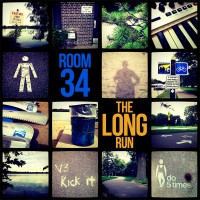 When I’m meeting with clients and collaborators to discuss building websites, I like to make analogies. As the representative “tech geek” in most of these meetings, I find them the best way to convey the meaning of esoteric technical concepts, even if they’re sometimes rather strained. (I make car analogies a lot, for some reason.)
When I’m meeting with clients and collaborators to discuss building websites, I like to make analogies. As the representative “tech geek” in most of these meetings, I find them the best way to convey the meaning of esoteric technical concepts, even if they’re sometimes rather strained. (I make car analogies a lot, for some reason.)
The other day I was explaining my two favorite (and overlapping) current trends in web design: Responsive Web Design and Mobile First. (How convenient that A Book Apart has books on both topics. I mention A Book Apart a lot in meetings, too.)
Suddenly in the meeting it occurred to me that mobile-first web design has an analogy with the production of most of the Beatles’ albums. In the early and mid-1960s, popular music was released primarily in mono format. Most of the market for these albums was listening to them on small mono turntables, not expensive stereo equipment. (And apparently at the time mono equipment could not properly play back stereo records.)
When the time would come for the Beatles to prepare the final mixes of their albums, the band members would join George Martin in the studio and carefully perfect the mono mixes. Then the boys would all head to the pub and leave George Martin alone to hastily assemble the stereo mixes as an afterthought. (And, frankly, it shows.) But somewhere along the way (in 1968, specifically) stereo had caught on enough that the last few albums (Yellow Submarine, Abbey Road and Let It Be) were mixed in stereo first.
The web is kind of like those Beatles albums. Up until now, websites were designed for “mono”: a computer screen. Eventually enough people started using the web “in stereo” (on mobile devices) that mobile versions of websites became necessary, but they were a hasty afterthought. But we are presently arriving at a time when a lot of people are doing a lot, if not most, of their web browsing on mobile devices, of a variety of shapes and sizes and capabilities. It’s starting to make sense not just to consider mobile versions, but to start with the mobile design.
Fortunately, we’re also at the point (to, as usual, strain the analogy) where the mono equipment can play back stereo records. There’s no need to design two separate websites, one for mobile and one for desktop. Responsive web design (via the magic of CSS3 media queries) lets us build one site that works on any screen.
But why mobile first? I see two main benefits, stemming from one main factor: the small screen size. By targeting the smallest screens first, you 1) focus on what’s most important, and 2) can more easily see what’s not important… or, at least, less important.
Mobile first fits well with the model of best-practices web design I like to promote. The decisions you make to create the best mobile experience will generally create the best experience, period. Granted, the needs of a visitor on their way to your office and checking your site on their smartphone may well differ from those of the visitor casually browsing your site on their iPad in bed, or from the customer placing an order from their office PC, but it’s easy enough to enhance the experience for users of those larger displays after the core needs of the mobile user have been addressed.
It’s an exciting time to be a web designer. Things are really starting to… come together.
(Come on, you knew I had to end with a Beatles reference.)


